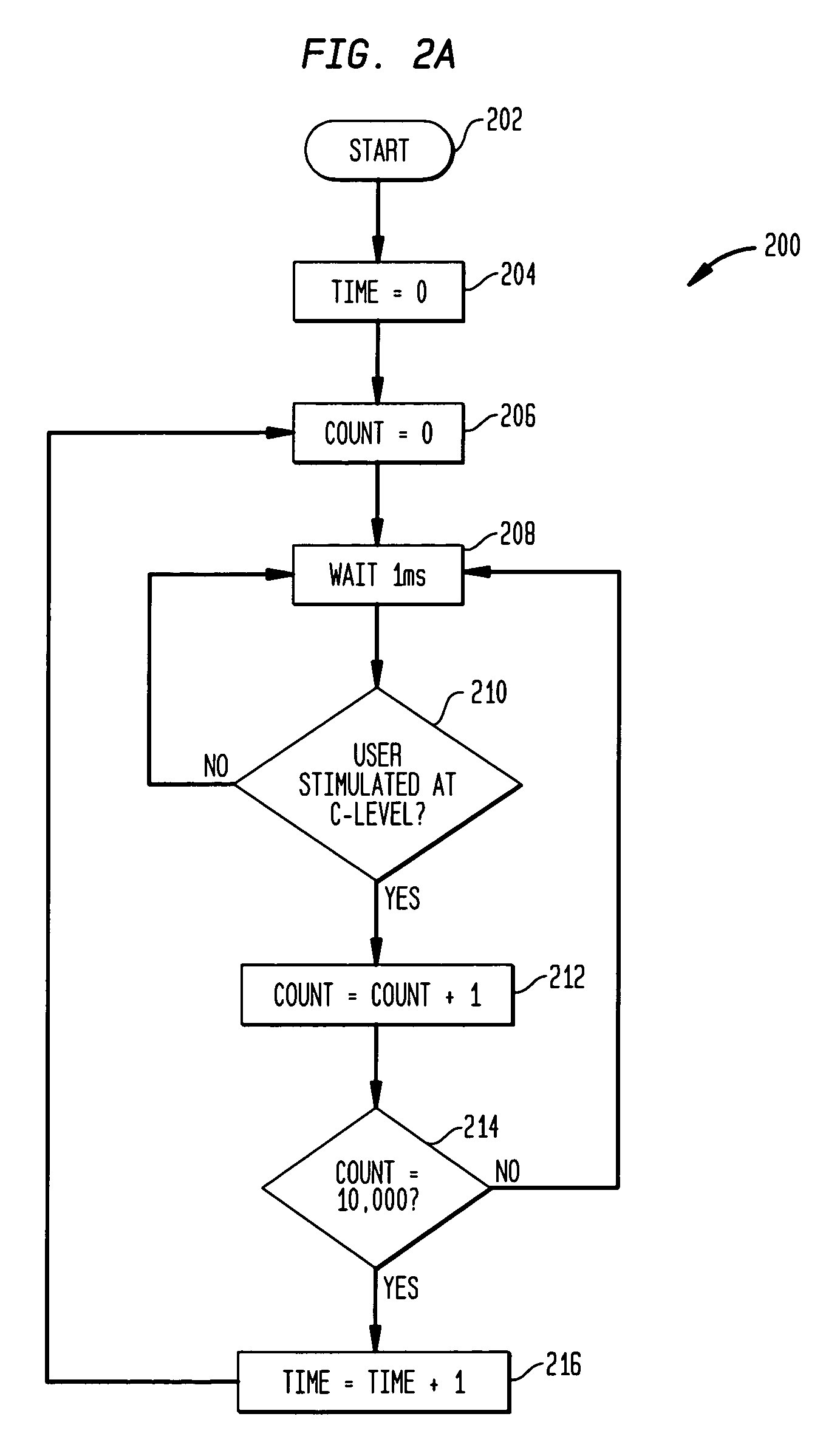User control for hearing prostheses
a hearing prosthesis and user technology, applied in the field of hearing prosthesis user control, can solve the problems of reducing the range of different percepts which are possible, affecting speech perception performance, and long fitting process
- Summary
- Abstract
- Description
- Claims
- Application Information
AI Technical Summary
Benefits of technology
Problems solved by technology
Method used
Image
Examples
Embodiment Construction
Introduction to Selected Embodiments
[0021]The present invention is generally directed to providing a hearing prosthesis whereby the change of an operating parameter by the user is only possible in discrete maximum steps, with the availability for further increments being dependant upon some conditional event or occurrence (“condition” herein) represented by one or more condition parameters such as the time which has elapsed since some previous event. In embodiments in which the condition parameter(s) include an event, such event may be, for example, the initial fitting or adjustment by a clinician, the last user adjustment, the last upward adjustment by the user, etc. In certain embodiments, the condition parameter(s) may include, for example, an elapsed period of time, a certain quantity of stimuli at a particular current level, or some combination of time, stimulation count and stimulation level. In alternative embodiments, there may be a tiered set of increasing increments, of wh...
PUM
 Login to View More
Login to View More Abstract
Description
Claims
Application Information
 Login to View More
Login to View More - R&D
- Intellectual Property
- Life Sciences
- Materials
- Tech Scout
- Unparalleled Data Quality
- Higher Quality Content
- 60% Fewer Hallucinations
Browse by: Latest US Patents, China's latest patents, Technical Efficacy Thesaurus, Application Domain, Technology Topic, Popular Technical Reports.
© 2025 PatSnap. All rights reserved.Legal|Privacy policy|Modern Slavery Act Transparency Statement|Sitemap|About US| Contact US: help@patsnap.com



